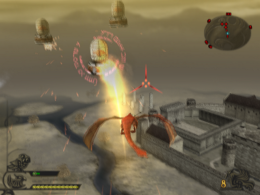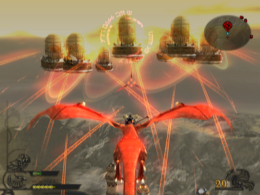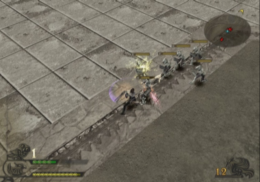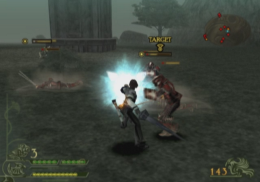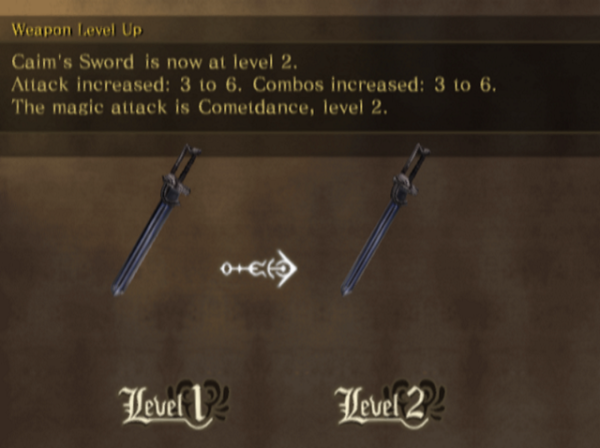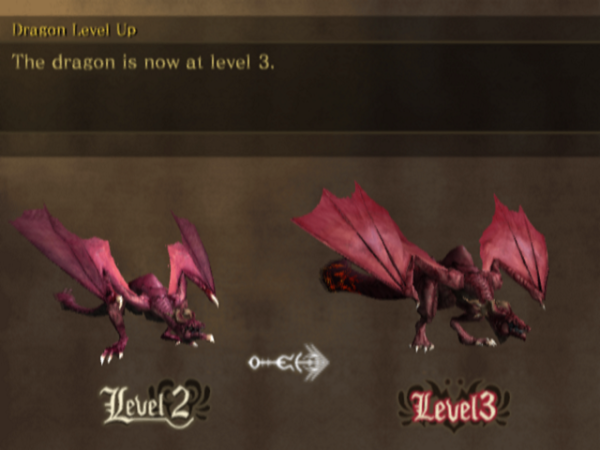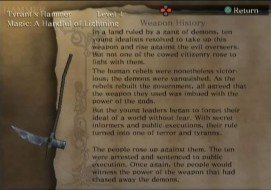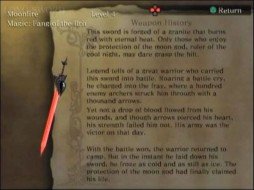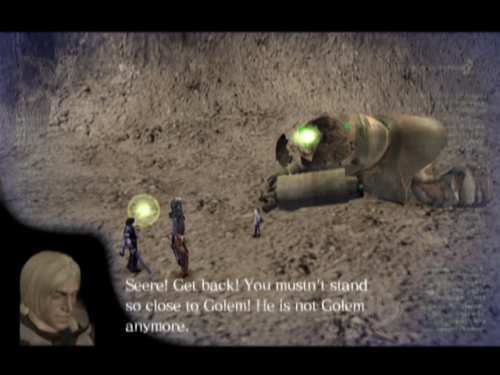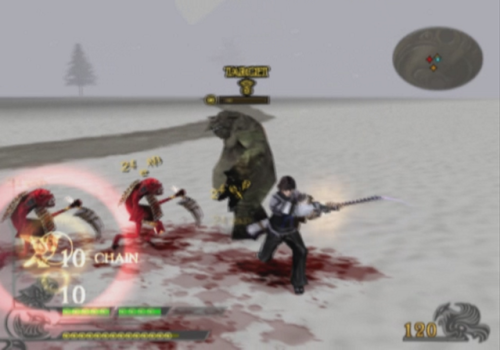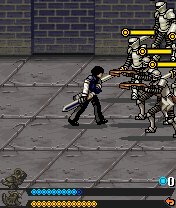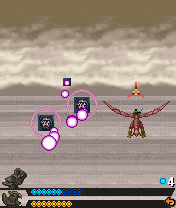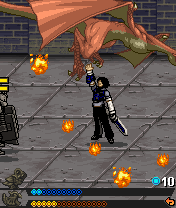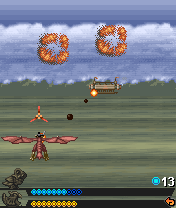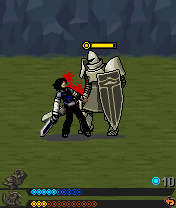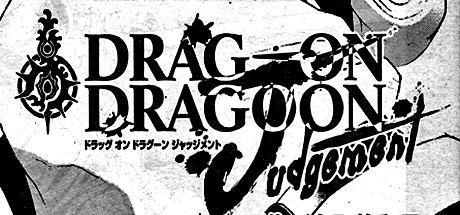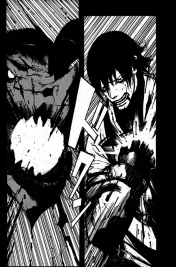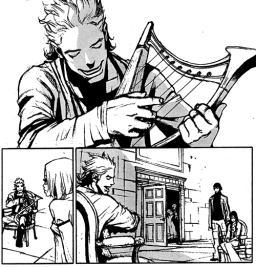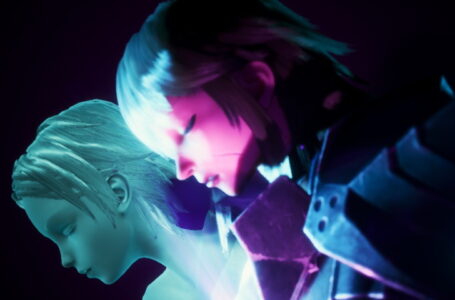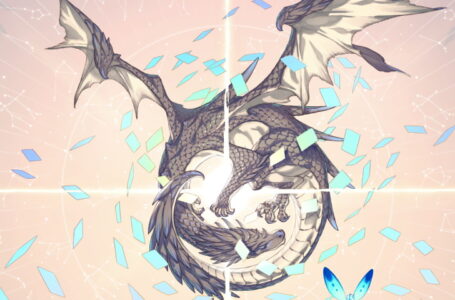Drakengard Retrospective: Drakengard
With Drakengard 3 just out, it’s a good idea to take a look at the history of this unusual franchise and the company behind it. Featuring novel gameplay which blends multiple genres and an extremely dark and deep storyline, Drakengard is one series that shouldn’t be overlooked.
Contents
Intro
Drakengard
Drakengard Mobile
Drakengard: Judgement
Drakengard 2
Lord of Vermilion
Nier
Grimoire Nier
Nier Replicant Drama CD
Nier Comic
Nier Development
Drakengard 3 Interviews
Drakengard 3
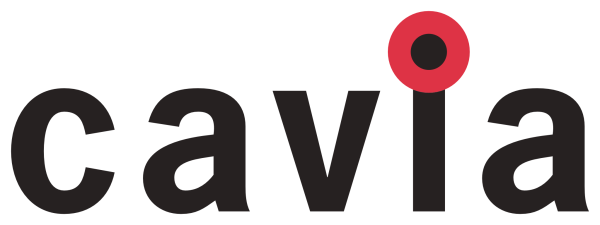
Intro
Drakengard or Drag-On Dragoon as known in Japan is a series of titles released primarily by cavia. It features on-foot combat similar to that of Dynasty Warriors and has aerial sections more like those in Ace Combat than Panzer Dragoon.
Named after the cute type of rodent, cavia was founded in the year 2000 and focused on releasing existing franchises on a variety of platforms. They developed Resident Evil: Dead Aim, Resident Evil: The Darkside Chronicles, Fate/Tiger Colosseum, Bullet Witch and a lot of titles for other franchises including: One Piece, Dragon Ball Z, Naruto and Ghost in the Shell. In July 2010 the company was disbanded leaving Drakengard’s spin-off, Nier, as their swan song.
The concept for Drakengard originated back in 1999, four years before actual debut of the franchise. Takamasa Shiba and Takuya Iwasaki came up with the original idea. Since some members of cavia used to work on the Ace Combat games in the past, Iwasaki pitched the idea for a game that would feature similar gameplay. The project was ultimately given to Taro Yoko, because Iwasaki, the producer at the time, was too busy. Taro Yoko is the man most responsible for shaping the series to its current glory and the person without which there wouldn’t be even half of the absolutely insane stuff there was in the final product.
Drakengard was initially imagined just as Ace Combat except with a dragon. The decision to include Dynasty Warriors-style gameplay was later made by Shiba, because of the rising popularity of Dynasty Warriors series at the time. While the first title was a bit on the slow side and had a lot of repetitive sections, each of its successors refined some elements and increased the speed of the gameplay noticeably. While not to say that all the changes were positive, the majority of them made the series more accessible and playable.
Drakengard has a dark fantasy setting and takes place in the land of Midgard. The series was heavily influenced by European folklore, which can be seen by its locations and weapons. It has a lot of dark themes and is filled with the themes of tragedy and immorality. The reason for this was because Taro Yoko said that he wanted to differentiate the game from other popular titles of the era such as Dragon Quest and Final Fantasy. His inspiration was Neon Genisis Evangelion, Puella Magi Madoka Magica and his detest toward Sister Princess. The prior two because of their mindfuck moments, while the latter because of its incestual themes.
All the games feature RPG elements. While your level in the first game only meant a slight boost in HP, the future titles increased other stats as well. The Drakengard series allows you to level up individual weapons, increasing their strength, combo count and magic power. All weapons can level up to four times. What’s most interesting about them is that each weapon has a history behind it. Each time a weapon levels up you get a new paragraph of that story. These tales are usually very entertaining to read and more often than not end on a tragic note.
The main theme of the game is the pact between a human and a beast. Almost all the important characters have made a pact. Each pact has a price which the human side must pay, usually being the loss of an important aspect of that character. In the first Drakengard the protagonist loses his ability to speak, rendering him mute throughout the game.
Because of its engaging story, there are a number of novellas and manga for each game. They each usually explore a single ending and flesh out events between two games.
The lead character designer was Kimihiko Fujisaki. He worked on The Last Story and also did the character design for all the Drakengard titles including Lords of Vermilion and earlier concepts of Nier. His main influence for Drakengard 3’s female characters was Puella Magi Madoka Magica.
The entire series always had a mixed reception, scoring from quite high to very low. Besides this it still managed to gain a cult following, because of its engaging story. While the sales for the western region are unknown, the games sold relatively well in Japan. The first title sold over 240,000 copies in Japan while the second sold over 203,000 in its first year. Nier sold over 121,000 copies within its first month in Japan. In whole the series sold over 750,000 units in Japan alone.
Drakengard
Known as Drag-On Dragoon in Japan, Drakengard was the first game in the series. It was released for the PlayStation 2 in 2003 in Japan and a year later in North America and Europe.
The tale begins with the battle between the Union and Empire. You play as Caim, a Union soldier, who during the battle is mortally wounded. You make your way back to his castle where Caim finds a wounded dragon. Reluctantly he makes a pact with the beast in order to save his life and the life of the dragon.
After fending off the castle he finds out that the reason the empire attacked was because they wanted his sister Furiae, who is also the Goddess of the seal. Along with his sister and friend Inuart, he makes his way to the elf village seeking sanctum. From then on things go all over the place, and you travel to a desert, snowy plain, flying fortress and the Empire’s capital. The entire world map is in fact an upside down map of Europe, with the evil Empire located where Spain would be.
The whole thing gets progressively more and more outlandish. The endings are some of the weirdest out there featuring: a giant sorcerer kid, floating naked babies with electric wings, mutated Furiae, and a rhythmic simulation battle in modern day Tokyo against a huge statute. Needless to say, this is what makes Drakengard such a thrilling experience, as you never know what the creators will throw at you next.
The story is split into chapters, each focusing on a specific region of the map. Each chapter contains a set number of verses, acting as stages. They can either be: in-game cutscenes, FMVs, flying sections or on foot sections. This kind of layout allows you to replay levels or watch cutscenes at your own leisure.
The game also has expeditions. These are essentially gameplay sections with no story that allow you to level up your character and weapons. They are optional, but are there as a means to collect all the weapons.
Because of its structure, the game allows for branching paths. Some verses cannot be played until a specific conditions are met in other verses. The game also doesn’t follow a chronological order. For example, finding specific allies unlocks events with them in earlier verses before you even met them.
The majority of story sections don’t have your allies, but each ally gets his own side chapter. These missions do well to flesh out the characters and are probably the parts with the most questionable content. In one of Leonard’s missions you go around killing Empire children soldiers.
Yoko Taro wanted to make the game different from any of the titles on the market. What we got was a deep and dark story full of metaphors and a lot of taboo themes, such as incest, pedophilia, cannibalism, infanticide, ethnic cleansing, the list goes on and on. The majority of these elements were toned down or removed from the western releases of the game, meaning some of the scenes are a lot harder to piece together.
All the characters in Drakengard have something specific about them. Each and every one of them has a tragic backstory, with quite a few just plain mad. While the game doesn’t go too in-depth about some of them, piecing the entire picture is part of the enjoyment. The human characters are named after demons while the dragons are named after Angels.
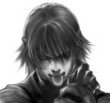
Caim
He is a union soldier and a former prince. Fueled by bloodlust, he frequently goes out of his way just to murder more people. This may be because his parents were killed by a black dragon. His pact with Angelus cost him his voice rendering him mute for the entirety of the game, always keeping the player guessing Caim’s real intentions.

Angelus
Originally known as Angel in the Japanese version, Angelus is a red dragon who has lived for over 10,000 years. Captured by the empire and left to die, she made a pact with Caim in order to survive. As things progress her relationship with Caim grows to a more romantic one.
The Goddess of the seal and Caim’s sister. Being forced into the position of the goddess left a heavy weight on her shoulders. It is implied that she has romantic feelings for her brother.
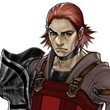 Inuart
Inuart
He was supposed to marry Furiae before she became the Goddess. Inuart is not a warrior, only able to sooth things using his songs. With lingering passions for Furiae and constant envy towards Caim’s ability to protect his sister, he is brainwashed in becoming Caim’s rival. Inuart makes a pact with black dragon which killed Caim’s parents, losing his ability to sing. Might be a necrophile.
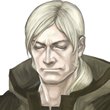 Leonard
Leonard
After his village was destroyed he tried to kill himself. His suicide attempt failed and he ended up in a pact with a Faerie, which constantly mocks him. His pact price was his sight. While not stated, it’s implied that he is a pedophile for which he hates himself.
Arioch is an elf that lost her husband and children to the Empire. Because of this she went mad and formed a pact with Undine and Salamander. Her pact price was her womb, but in the deranged state she had little use for it. Now she stalks children and cannibalizes them wanting to be one with them.
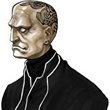 Verdelet
Verdelet
Verdelet is the Hiearch of the Union and the only priest which is allowed to speak with the Goddess. He made a pact with a petrified dragon, paying his hair as the price. Because of his age he is senile, constantly repeating the same things over and over.
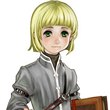 Seere
Seere
Seere is Manah’s twin brother. He made a pact with a Golem. His pact price was his time, rendering him forever young. His young age and innocents makes him a perfect ally and target for the psychotic and deranged murderer, Caim, the pedophile, Leonard, and child cannibal, Arioch.
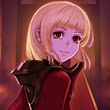 Manah
Manah
Manah is Seere’s twin sister. Their mother only abused Manah which left a mark on her mental state. She serves as the main antagonist of Drakengard and is under the control of The Watchers.
The gameplay is divided into three sections: Flying, on foot and mixed sections. The highlight are the aerial segments and while not without their share of problems they are by far the best part of the game. Your dragon can spew fire balls, speed up, dodge enemy fire, fire an ultimate attack or unleash a barrage of lasers via the lock on system reminiscent of Panzer Dragoon. The flying feels tight and once you get the hang of it you will be piloting your dragon like an F-16. All save for one boss battle is in the sky and each and every one of them is great. While they might be challenging once you finally beat them you truly feel a sense of accomplishment.
While the flying segments feel novel the same cannot be said for the ground sections. The game has definitely not aged gracefully. While at the time it might have been just mediocre now it’s terrible. All the allies you see in the FMVs are just disembodied floating heads that spout out plot during battles. It’s just you against the whole Empire. Enemies are no better either. They wait around for you to come into range and then they rush up to you. Some missions are set-up so you need to stop a convoy of enemies, but in reality they are just waiting around for you to come and butcher them. There is no mission diversity, because almost all of them require you to find and kill a few target enemies. Only a few missions have a tight time limit or force you to pick up a key and open a door, but at the end it’s no different than the previous mentioned missions. Add the fact that there are no side objectives or rewards for killing the whole map and you might as well get onto your dragon and kill the few target enemies without any sidetracking.
The only redeeming fact is that you can hop onto your dragon whenever you please and go burning down enemy troops. The dragon controls differently during these sections, as you cannot fly up or down or use your homing attack. This can be quite a nice stress reliever, as you rain down fire killing hundreds of troops in seconds which would otherwise take a while.
To combat the fact that Angelus can be so overpowering specific enemies are immune to her attacks while others such as crossbowmen or mages can shoot Caim out of the sky. Getting hit twice sends Caim flying off forcing him to mount Angelus again.
At your disposal you have a standard attack, which can be mashed in order to chain a combo. Pressing the Triangle button at the correct time will result in an ending move. While ending moves only fall into a few categories, each weapon has its own distinct spell making each weapon feel special. Overall the combat feels a bit slow especially considering the competition.
Reading the user manual is a must, considering how many elements aren’t explained. The game quickly skimps across a few of the button explanations and leaves the rest up to you. While this would have been fine it does warrant some frustration when all of a sudden enemy HP bars vanish.
Drakengard has some questionable RPG elements. Angelus automatically evolves after specific events, while traditional leveling up only increases your HP. Leveling up weapons on the other hand requires kills instead of experience. This unfortunately means that it’s not important how powerful the monster is but how many you kill, forcing you to grind in the earlier stages. This kind of leveling up is extremely slow and by the end you are bound to only have a handful level four weapons. There is around 65 weapons and thankfully they change appearances and gain more stories so there is an incentive to fully upgrade at least a few of them.
Sword: Hunter’s Joy
In a certain country lived a feudal lord. This lord was enamored of the hunt; each day he rode out to find animals to slay, his favourite hunting sword by his side.
Level 2: One evening, the animals of the forest gathered together in council. “We cannot survive much longer! We must kill the lord if we wish to live!”
Level 3: So the animals of the forest surrounded the lord’s manor, seeking a way in. But when the lord saw them all, he danced with delight. “So, they have all gathered for the hunt!”
Level 4: With joy coursing through his veins, the lord rode out and slaughtered all the animals till not one remained in the forest. By the by, the lord lived happily on to a ripe old age.
Up to 8 Weapons can be selected for any mission, you can then swap them at any time during the stage. Each weapon has its own stats such as sharpness, material and weight, but only a few of these actually mean something.
Throughout the story you will also come across allies. They are nothing more than summons. Before the level you select which ally you want and you can summon him or her up to three times on the battlefield. Summoning an ally changes Caim into that person until his HP become zero, after which he turns back to Caim, ready to be summoned again. Despite the fact that the HP constantly drains allies are indispensable since they can mean the difference between completing a mission and failing.
The game features five endings. While the first ending is canon, it doesn’t really explain much. Thankfully getting most of the other endings is very simple, since you can continue right where you left off, selecting new events in a chapter that are highlighted. Each ending paints a new picture of what exactly happened as you slowly go deeper into the darker events.
The final ending is the most difficult to get, requiring you to collect all the weapons. The final battle takes place over Tokyo fighting via a rhythmic simulation. Taro Yoko considers this ending as a tribute to The End of Evangelion. The main villains, the cult of The Watchers, were originally called Tenshi in Japan which can futher serve as a link between these two series. The final ending was made as a joke ending, similar to the UFO endings in the Silent Hill series. It wasn’t even shown to the majority of the team until the very end of development. Shiba initially hated it, but it was this ending which served as the catalyst for the events which transpired in Nier.
Voice acting in Drakengard is a very mixed experience. It spans from acceptable to outright annoying. Some characters like the Leonard’s fairy can make you pull out you hair, while others like Verdelet can put you to sleep. On the plus side this is the first time I saw a man tortured using underacting alone.
Drakengard’s music was praised when it came out. The composers took multiple samples of classical music and remixed it. This was done in order to get an experimental style that would give of the sense of madness while you play. All the compositions were then played out by a live orchestra.
The visuals are disappointing. The game has some horrendous draw distances, as your character can barely see a couple of steps in front of him. Despite this there is always a limited amount of enemies on screen at a time. If you try to approach another enemy formation they just start running away. This meant you would have a maximum of 5-10 enemies on screen at a time. The useless mini map doesn’t help either, because it only shows as far as you can already see, so you will most likely be mashing the start button in order to see the full map. All this wouldn’t have been so bad if Dynasty Warriors wasn’t already at its fourth instalment and had farther draw distances, more enemies on screen and much faster gameplay.
The original Drakengard also has a blur filter meaning nothing ever looks sharp. Locals are drab, always looking flat. There is never any scenery. The castle interior for example is just a bunch of empty rooms. On the positive note, the game is filled with FMVs and they all look amazing. Because of Yoko’s wish to make everything as dark as possible, there was a lot of conflict with Square Enix. Yoko had to fight in order to keep the brown color of the sky, despite Squre Enix’s wish for it to be blue. While I do commend the author for his effort in order to keep his initial vision, I cannot but question his decision since everything already is full of earthy tones.
The majority of these issues might have come up from the fact that the game was undermanned. It initially was supposed to span over two disks, but because they were rushed by Square Enix the game had to ship on one. Furiae was planned to be a playable character. Elements such as the jump feature were buggy so it has no actual use in the released title.
In the end Drakengard was a mediocre title with disappointing gameplay but intriguing storyline. While the plot is never detailedly explained it still does add a breath of fresh air for a genre mostly void of narrative. Even though some of the elements worked better than others, it was still this title that began the franchise which continues to this day.
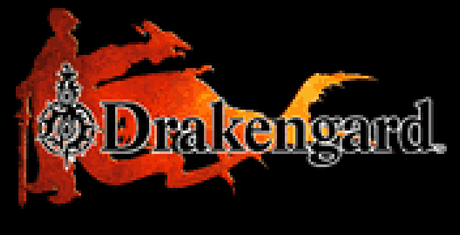
Drakengard
Mobile
The mobile version of Drakengard was an European exclusive, co-published and developed by Square Enix and Macrospace. The game came out at the same time as the original and was actually a quite faithful adaptation of the PlayStation 2 title. It features almost all the gameplay elements from the PlayStation 2 game, from the world map to the similar enemy types.
The game has both on foot and aerial missions with the omission of the combination of both, but instead you are allowed to summon Angelus as an ultimate attack while you are on the ground. The mobile version also has leveling up system, but unlike in the original it raises other stats besides your HP bar, meaning you can one hit kill a boss if your return to a prior chapter.
Unfortunately the first Drakengard wasn’t known for its innovative gameplay, so this game managed to copy the most unengaging segments. It even went so far as to have disembodied voices of your non-existing Union allies and a jump button, which like in the original has no function.
Aerial missions play out much like Space Harrier. You have all the basic commands you have in the PlayStation 2 version such as standard fire, lock-on attack, dodging and an ultimate attack. This portion is extremely easy as enemy attacks take only a small amount of your HP. Your attacks also don’t need to be centered since your fireballs fly upward hitting anything that may come in its path.
Because of all of this the game isn’t particularly good and it was also on the short side. It took less than 10 minutes to plough through the 3 chapters each consisting of one on foot stage and one aerial stage. Each chapter also features the same boss character except with more HP. But none of this makes the game harder, just more repetitive, as you can easily hold down the attack button and just wait it out until the boss dies. All the boss battles are on ground which is in stark contrast to the PlayStation 2 version where all save one were in the air.
The game should be taken as an addition to the original as it gives the user hints and tips for the PS2 title. All in all this title is more of a small taste of what you can expect in the full game, but lacking the plot and atmosphere which are by far the best elements of the original.
Drakengard: Judgement
Manga
Drakengard: Judgement serves as a prequel to the story in Drakengard. Set four years before the events of the original Drakengard, it focuses on the bonds of the characters and does well to flesh them out. This in turn also allows for easier understanding of the game’s story as it’s more coherently laid out. Unfortunately the manga isn’t considered as canon and therefore it really is questionable how much of it really precedes the game.
The story starts as Caim makes the pact with Angelus and then goes back to the prior events. It touches upon some darker topics such as Caim’s cheating father, the death of the previous Goddess of the seal and Furiae’s wish to be a women, but being forced to become the new Goddess. There is also a focus on the marriage arrangement with Furiae and Inuart, as well as her love for her brother Caim. Judgement features other characters such as the hierarch Verdelet, who still hadn’t lost his hair in a pact.
The art is nothing to write home about and it can feel a bit inconsistent at times. The lines aren’t clean and it all has more of a sketchy look. The entire manga has a more European style than Japanese, but considering the setting and tone of the series it is quite fitting.
In the end Drakengard: Judgement wasn’t received well and was cancelled after only two chapters.
Read Part 2 – covering Drakengard 2 and Lord of Vermilion.
- Gal Gun 2 Review (PS4) (Switch) - April 17, 2018
- Aegis Defenders Review (PC) - April 6, 2018
- The Witch and the Hundred Knight 2 Review (PS4) - March 26, 2018



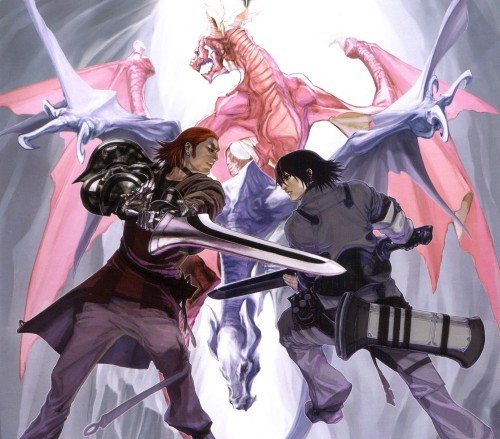
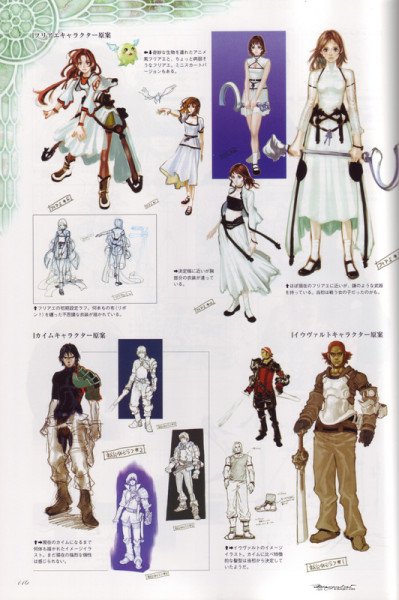
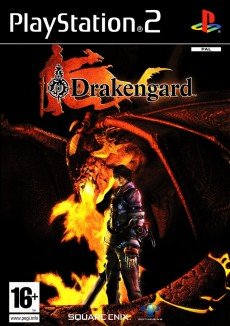
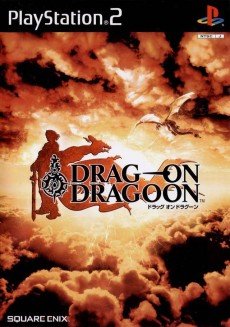
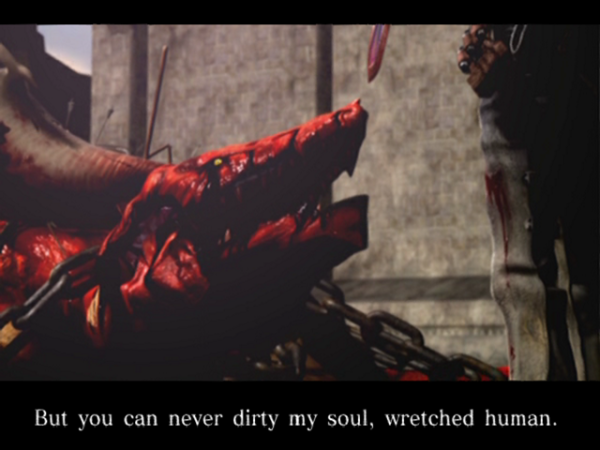
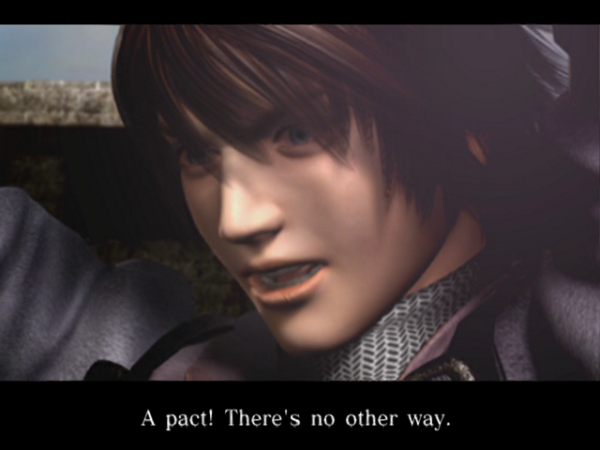
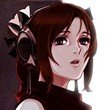 Furiae
Furiae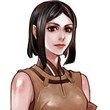 Arioch
Arioch